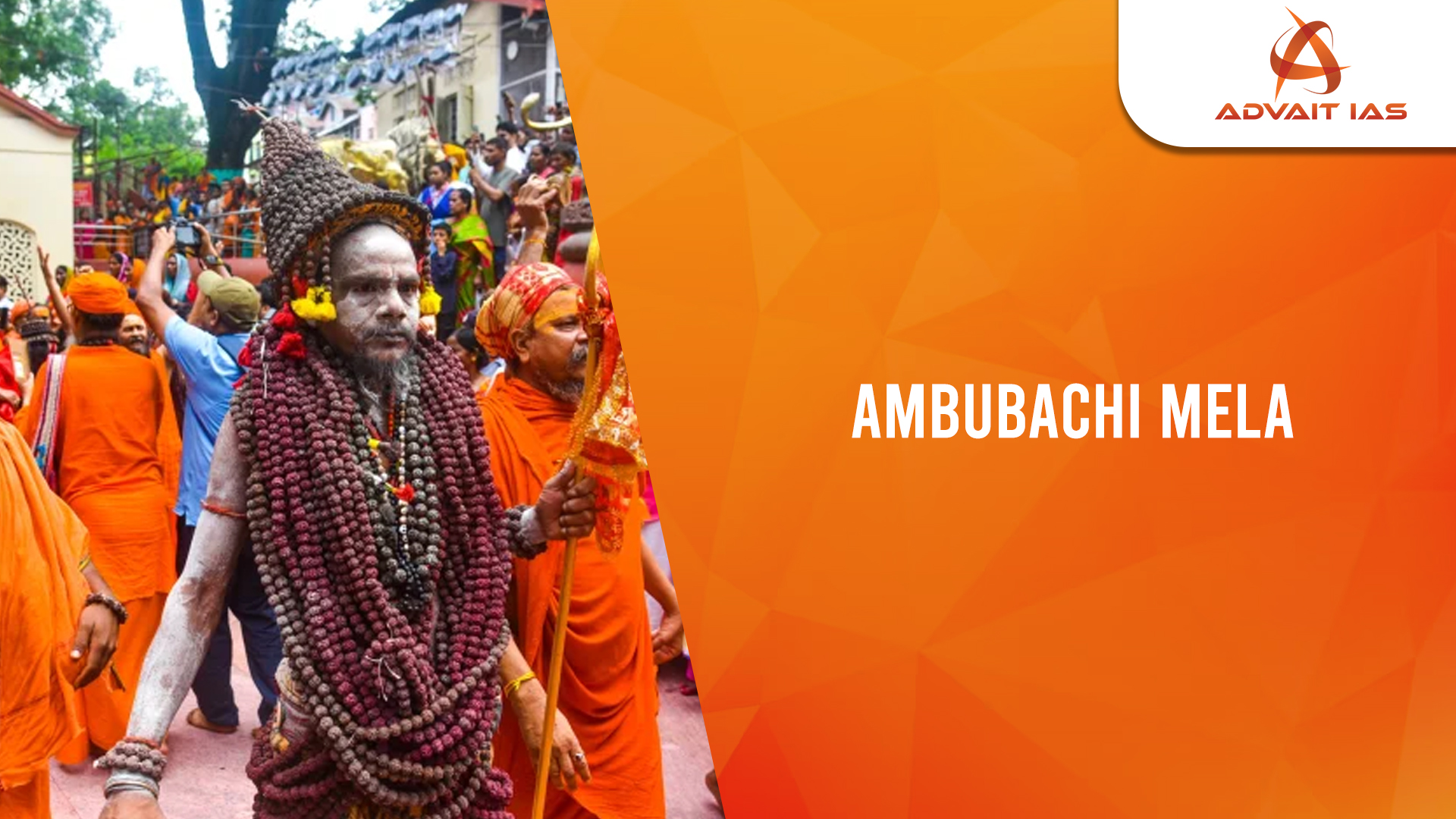The annual Ambubachi Mela was recently held at the Kamakhya Temple, Guwahati, marking a unique celebration of fertility, femininity, and mysticism, attracting pilgrims, tantrics, and tourists from across India and abroad.
Significance and Observance
- Etymology:
- Derived from the Sanskrit word ‘Ambuvaci’, meaning the brimming of the earth’s water during monsoon.
- Symbolizes fertility of the earth; a time of rejuvenation known as Ameti.
- Celebration Time: During the Assamese month of Ahaar (mid-June), when the sun enters Mithuna Rashi and the Brahmaputra river swells.
- Venue: Celebrated at the sacred Kamakhya Temple, one of the 51 Shakti Peeths, located on Nilachal Hill in Guwahati, Assam.
- Cultural Role:
- Mela marks the annual menstrual cycle of Goddess Kamakhya, a festival that reveres womanhood and menstruation, breaking associated taboos.
- Traditionally includes abstinence from agricultural and temple activities for three days.
Mythological Foundations
- Shakti Peeth Legend:
- Sati, wife of Lord Shiva, immolated herself at her father Daksha’s yajna.
- Enraged, Shiva performed Tandava, carrying her body.
- Vishnu’s Sudarshan Chakra cut her body into 51 parts; her reproductive organ fell at Nilachal Hill — now Kamakhya Temple.
- Legend of Kamadeva:
- Kamadeva disturbed Shiva’s meditation and was incinerated.
- Reborn in a disembodied form after Rati’s plea.
- Regained form after worshipping Goddess Kamakhya; built the temple with Vishwakarma‘s
Archaeological and Tribal Roots
- Kamakhya linked to tribal deity Ka-mei-kha (Khasi term: “She who created you”).
- Worshipped by matrilineal tribes such as Garos and Khasis.
- Textual evidence from Kalika Purana and Yogini Tantra affirms its tribal origins.
- Site was associated with sacrificial rituals before the emergence of temple architecture.
Historical Development and Dynastic Patronage
Narakasura Legend:
- Tricked by Goddess Kamakhya while constructing stairs to the temple in one night.
- The unfinished stairway is known as Mekhelaujowa Path.
Gouda, Mleccha, Koch, and Ahom dynasties:
- The Kamakhya temple’s roots can be traced back to the 7th century, and King Bhagadatta or Shashanka is credited with its initial establishment.
- The kings of the Mleccha dynasty were fervent followers of the Tantric cult and constructed a stone temple during the 8th-9th centuries.
- After an unspecified destruction by Kalapahar, Vishwa Singh, the first King of the Koch dynasty, rebuilt the upper part, and it was subsequently completed by King Naranarayan in 1565 CE.
- The current form of the temple was established under the reign of the Ahom kings.
Contemporary Relevance
- Spiritual and Mystical Hub:
- Attracts sadhus, tantrics, devotees, and spiritual seekers.
- Acts as a mystical centre for Tantra practices.
- Feminine Power and Menstrual Dignity:
- Celebrates reproductive power, femininity, and breaks menstrual stigma.
- Unique as one of the few festivals in the world linked to a goddess’s menstrual cycle.
- Tourism and Cultural Integration:
- Significant for religious tourism and cultural diplomacy.
- Needs structured promotion to preserve and popularise Assamese tradition and indigenous beliefs.
Ambubachi Mela is not just a festival but a celebration of womanhood, nature, and cultural integration. It reflects the synthesis of tribal spirituality, tantric rituals, and Hindu mythology, playing a vital role in Assam’s cultural identity and tourism economy.






